How to Effectively Get Valuable Customer Feedback From Your Website’s Users [Updated w/ 2022’s Best Practices]
Getting feedback from your users can make or break your business. However nothing valuable comes by easy these days, so collecting customer feedback can be a daunting task if you don’t know where to start or what you’re doing.
There are several methods to get your hands on this precious info depending on what situation you’re in. Since user feedback is what we do all day at Appzi, let’s discuss all the best practices and tools of the trade we know – all organized and broken down in one place, so you can evaluate what would work best for you.
Continue reading about how to collect user feedback, the best feedback tools out there, methods and let’s get to work!
Table of Contents
Why Is It Important You Collect Customer Feedback?
User feedback determines if there is a viable need for product or service improvement.
You, as a product owner, can try to imagine all the scenarios that may occur on your website, yet your end users will be the ones to have the most relevant say in what things to improve.
Whether it’s a website, a product or something completely different, you’re too close to your business to try to find what might disrupt users from doing what they have in mind when they get to your website.
However your customers won’t have any problems in telling you what sucks and what doesn’t – just give them a chance.

How to Get Quality Customer Feedback: All the Important Methods to Capture It
Even if we’ll lay plenty of methods to get feedback here, look out, as any interaction with your customers means feedback – it goes further than asking them what they like about your product and what they don’t.
First things first, understand the big steps one must take in order to get feedback. From asking the questions, managing and analyzing them, to implementing the feedback, all those actions will help you make your business better.
Once you learn how to obtain customer feedback, it will be a piece of cake to find the insights your customers have to offer.
The Top 5 User Feedback Tools to Collect Valuable Info
1. Implement a Website Feedback Button
Arguably the most convenient method for gathering quality user feedback, the website feedback button is usually at the far right of the web page or app. Although usually customizable, it can be located pretty much anywhere.
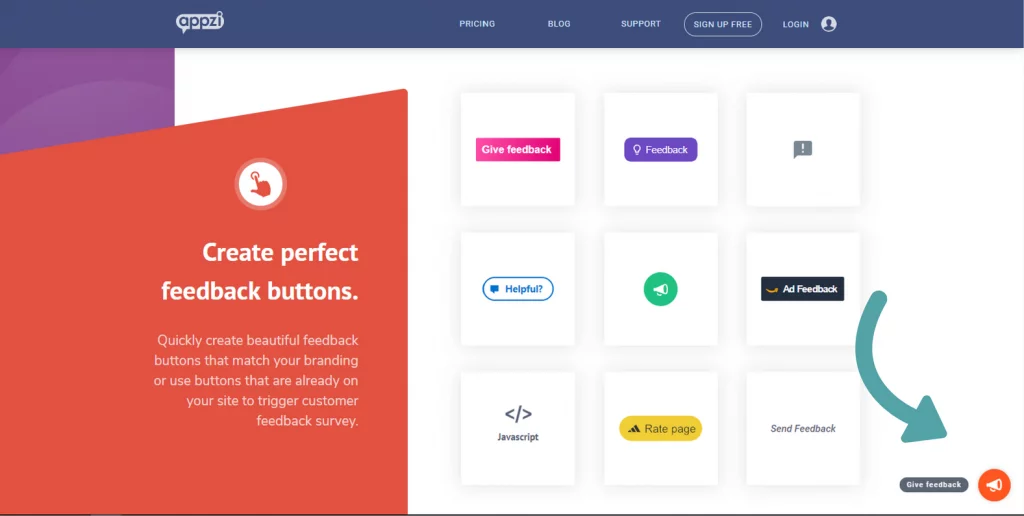
An easily-installed little web page plug-in that packs a lot of punch, the website feedback button (or feedback widget) provides a real-time option for customers to convey their good or bad user experience directly to you.
With a short survey, you can probe for a response, and determine quickly whether or not this requires some immediate following up.
All with the convenience of just one click – with the power of a poll or a survey in most cases – adding a website feedback button is simple and free.
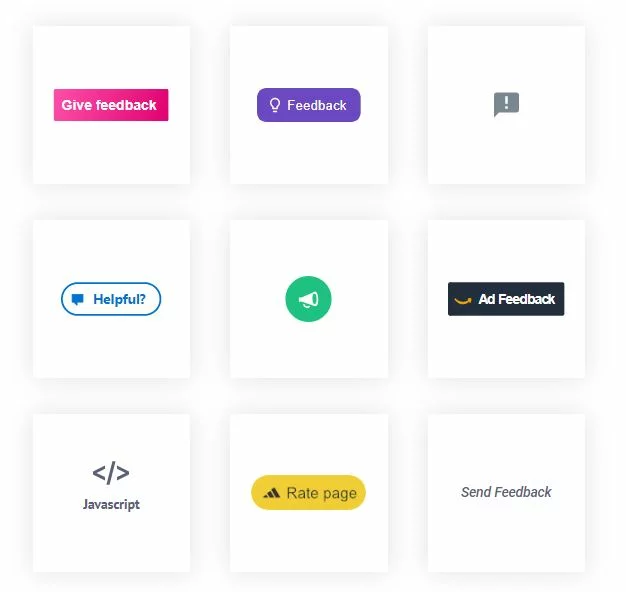
Why Use a Website Feedback Button?
It’s a simple and useful way to collect feedback that shows you the ways you can improve your website. Your website is where you first interact with your users so they can tell you a lot about what you can improve, from getting easier pricing information to an easier navigation and UX.
2. Use a Net Promoter Score Survey
If you want to find out if visitors are happy with your product, the best method to use is the Net Promoter Score survey that will ask your website visitors to rate their experience on a scale from 1 to 10.
The Net Promoter Score (NPS) is one of the most used ways to collect user feedback. Its biggest advantage is that it helps you grow your sales through word of mouth and repeat sales.
Using NPS, you ask your customers about how likely they are to recommend you to their friends and colleagues and what determined them to give that answer. Your ideal goal is to hit 100, the best score.
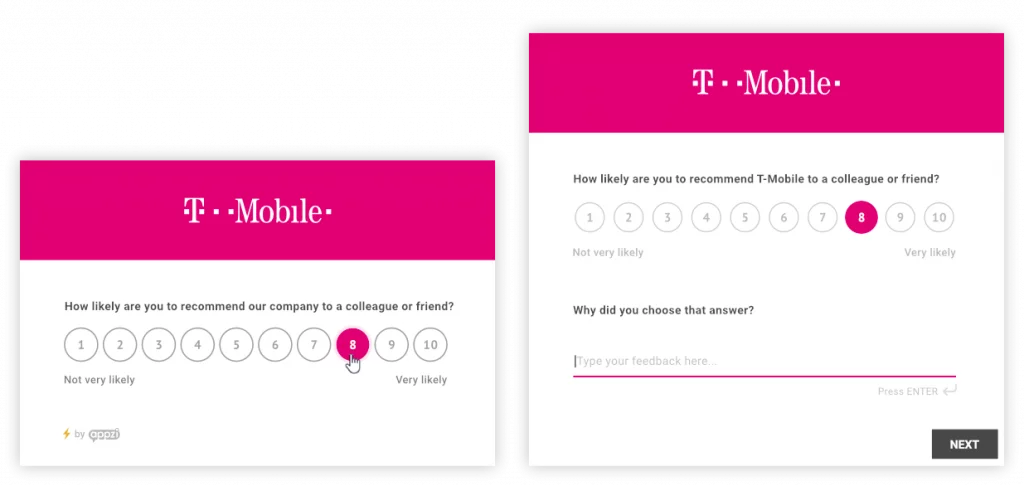
3. Email Surveys
Where would the world be without email?
Everybody knows its importance just on a personal level. When involving business relationships, email is downright essential, possibly a matter of life and death for any business today.
An email survey is inexpensive and an easy way to use both communication strongholds for gathering user feedback from a lot of people at once. Keeping your questions few and brief, your objective is to find out if whether or not your app is still relevant and still in use by your customers.
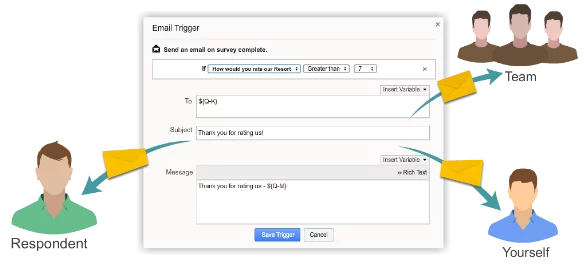
4. Live Chat Button
When you enter any brick and mortar market, when you walk through that glass door, you expect to see someone there.
44% of online consumers say that having questions answered by a live person while in the middle of an online purchase is one of the most important features a Web site can offer.
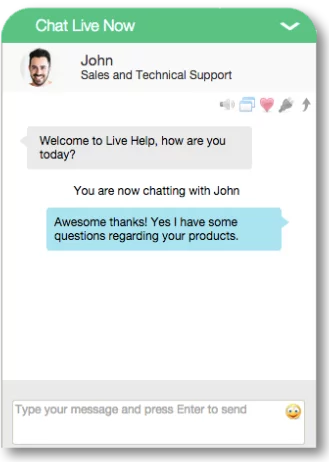
Live Chat is inexpensive.
Live Chat cuts down on telephone and employee hours. Live Chat is a direct tap into immediate customer frustration, providing real-time support.
In the digital marketplace, second only to the actual phone call for real-time interaction, having a live chat option demonstrates a clear commitment to customer satisfaction. You can solve their problem in real time, increase the rep of your brand, maintain that trust, and almost ensure a return visit for a future transaction.

Why Use a Live Chat Button?
Build customer loyalty is not an easy thing to do, but exactly the word “building” is the one that tells you to take action.
The best thing you can do for retention is to be there for your users. Real-time feedback helps your users feel the ball is in their court and they can communicate with the product owner at any given time. Live Chat is super convenient for this goal.
You probably didn’t think you can drive growth using feedback, but yes, this is possible. Live Chat, Email, and Social Media are the three tools you can use to offer great customer support and gather feedback at the same time.
5. Social Media Listening
When one person who’s had a bad user experience with an app tells 16 people about it, that disgruntled person will most likely speak out about it on social media too.
According to Brandwatch, “Internet users have an average of 7.6 social media accounts.”
How much are you willing to bank on that this one dissatisfied person (on the Internet) is only going to tell just sixteen others about that lackluster encounter with your app or your customer service?
If your product is being spoken of on a social media channel you are actively monitoring, then this another way of providing dynamic customer support and effective user feedback.
Being attentive and reactive to the social media sphere affords you a grassroots perspective of crowd reactions to any new rollouts, upgrades and/or changes to your product. It’s a useful insight into how it is being received by the public at large, an awareness of the general consensus.

Linkedin Polls
Ask for feedback on your personal Linkedin profile. Its a good practice if you want to decide which design is going to look better on your website or app. Here’s a great example of how Adham Dannaway, the Senior Product Designer at Australian Department of Agriculture, Water and the Environment, asks for feedback from his network:
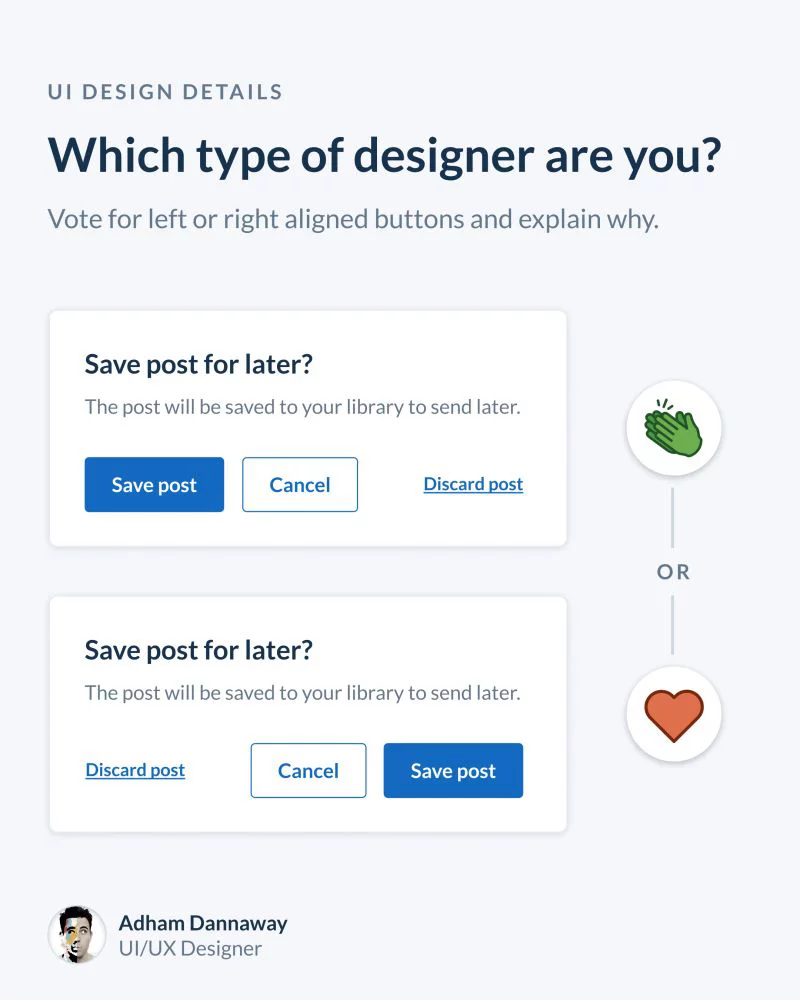
Just be aware that some of your Linkedin connections might not be the people in your target audience and might have a different opinion on what’s best for your website or app.
The Top Surveys You Can Use on Your Website to Get Customer Feedback
Depending on what you want to find out, there are one or more methods that will bring back exactly the information you need. There are many kinds of surveys you can implement, however, these are 5 of the most efficient in getting users to share their feedback:
The Product Feedback Survey
Product Surveys will let your users say what they think about your current product, what you can improve and what other products they want to have.
Using this type of survey, you will know where you need to make adjustments, if the pricing is fair and you can even make some mid-development research when you need more information from your audience.
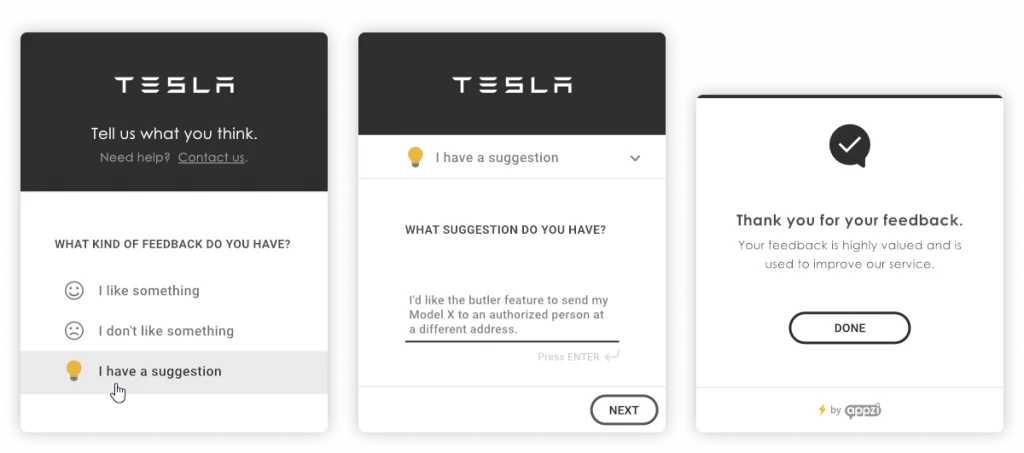
The Website Feedback Survey
Traffic data is not enough to understand if your users are content with your website. Simply use a website survey and you can find out those little details you can work on, along with what is the top feature you have.
The website survey will tell you how your visitors like your UI, what they think about the design, how useful is the design and many more.
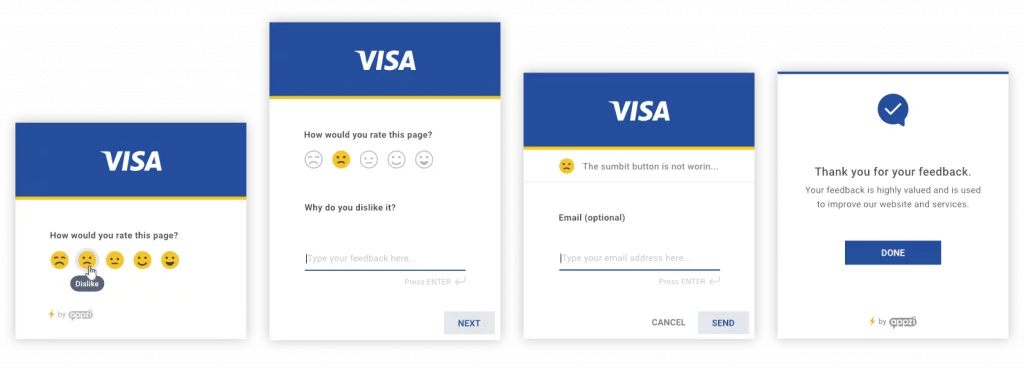
The Net Promoter Score Survey
The Net Promoter Score is one of the best tools you can use to get feedback and increase retention. Using a Net Promoter Score, you ask two simple questions that will probably make your customers return to you:
- How likely are you to recommend us to a friend or colleague?
- Why did you choose this answer?
The Simple Survey Feedback
The simple feedback is a one-question survey where you ask the user if he or she has any feedback for the product or the website. It may seem like a general question, but being that simple will let your users tell what they think immediately.
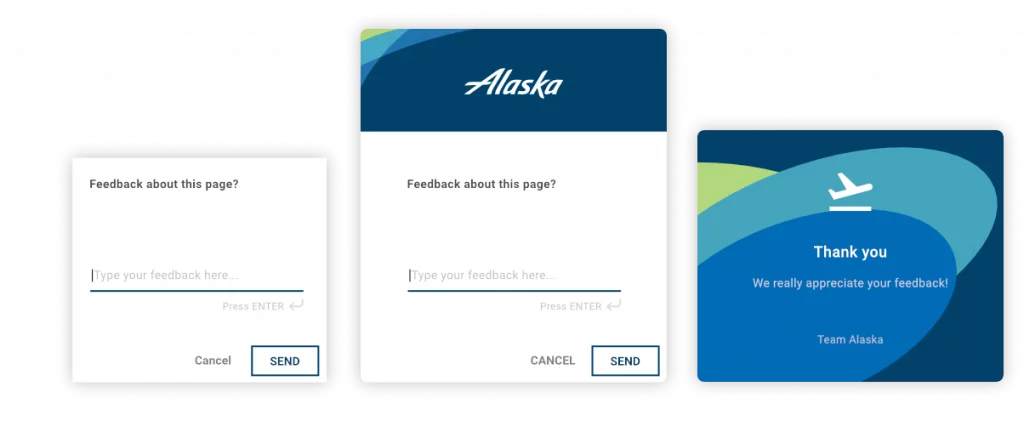
The “Was It Helpful?” Question
Similar to the simple feedback survey, a simple question can tell you if your users are happy or not with your product, service or website.
Asking your customers if what you provided is helpful lets them simply answer with “yes” or “no”. From there, you can investigate what the trouble was. Of course, they can say more than “yes” or “no” and that will help you even more.
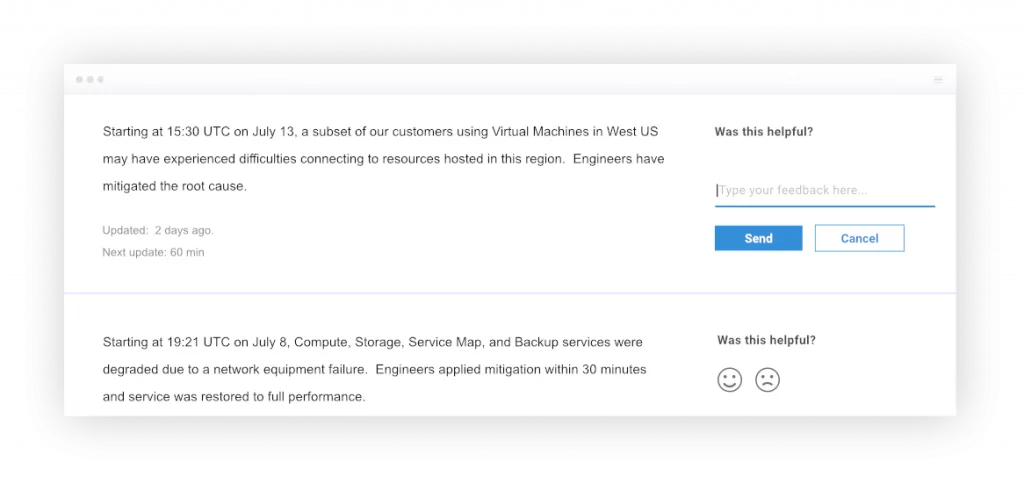
Targeted Website Survey
When you need to collect more data about your users, more than what you can find out from their actions, use a targeted website survey.
In-message Survey
In case your main purpose is to find out why visitors don’t buy or use your product, use the in-message surveys, as they are shorter than a traditional survey and it is easier for your users to answer.
Combined in-message survey with targeted website survey
Find out what users want by combining the in-message survey and the targeted website survey. If you think it is too much of a hassle, use only one tool. You should get the information you need from it.
Site Questionnaire
Understanding your customers is directly connected to your leads. The most elaborated feedback form is a questionnaire. There, you can ask more questions and get the bigger picture of your audience.
Even though surveys are one of the most effective ways to collect feedback, most people tend NOT to like them and are quick to stop answering them if they get asked too many questions.
We could share studies showing you how 80% of customers have abandoned a survey halfway through, but deep down you already know that – you’ve done it. I’ve done it. We’ve all done it: if it takes more than three minutes filling out a survey, chances are you’re going to abandon it half way through.
When Is the Best Time to Ask for Customer Feedback?
Nowadays, users are suffocated with feedback forms, so you can be one step ahead and be where your users want you to be.
1. Ask for Feedback During Crashes
Few people like hearing the “C” word. But “crashes” do happen.
Taking the bad with the good, this event-driven interaction between you and the user could provide the specifics necessary to resolve that issue. Your responsibility then is quick follow-up and active engagement. Determine what’s happening and promptly handle it for the better.
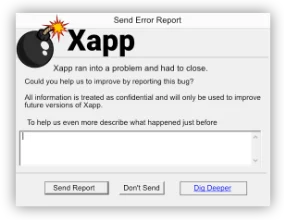
2. Ask for Feedback When Users Abandon Their Cart
The reasons behind cart abandonment can vary from customer to customer. Just like bugs happen, life happens. Whatever each individual case may be, the cart abandonment rate, for businesses selling online, on average, ranges between 68 – 78%.
Find out what reason could apply to yours.
Suggestion: Have a pop-up window display itself at the moment of cart abandonment asking your visitors why they wanted to leave when they did. Offer a direct link to your customer service in case there are support questions.
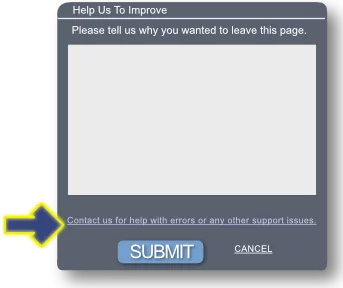

3. Ask Customers for Feedback During their Order Confirmation
Probably best effective for first time purchases, or if you’ve recently modified your website, requesting user feedback during order confirmation should be a delicate and strategic touch, as to not appear too “suggestive salesy“.
It would become exponentially irritating, rather impersonal really, if every time a purchase was made on your web page, whether it was a unique visitor or not, they were questioned about their shopping experience.
Pay attention. Ask the right questions for the right customer, if you just gotta. Use the time of purchase to determine if the customer experience was intuitive. Just like you would with polls, keep it simple. Provide an active link to your support team.
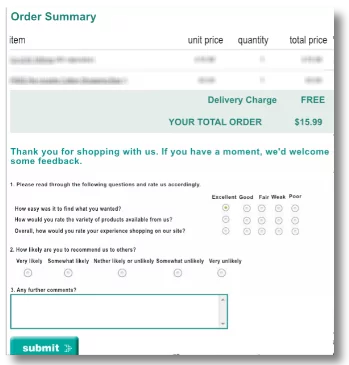
4. Get Feedback at the “Thank You!” Page
A “Thank You” page means you’ve already gained important ground with your new customer. This person has entrusted you with their contact info and is investigating your site.
There could be some debate that asking “if they’d like fries with their meal” right now might not be the best approach. However, who would fault you for having some relevant content here (especially during a download), just in case, for this instance, it is?
At the register at a typical brick and mortar establishment, who hasn’t noticed that most cashiers in almost all chains ask that (coincidentally existential) question “Have you found what you were looking for?”
As a digital marketer peddling your ware, this is a great opportunity to determine if there are any features that the customer was expecting.
It’s a chance to direct them to self-service options, should they later require technical or other assistance, and towards any social media links.


What Are the Best Customer Feedback Forms?
There is no best customer feedback app or form because something customized for your audience is always better. Even so, there are best practices that will help you increase the response rate.
Just because your customers are willing to answer your questions, it doesn’t mean they will submit the form. You should keep them engaged on the road.
Here’s what you can do to get all the answers:
- Avoid the clutter. Make your form appealing to the eye and leave a lot of white space. This is a trick to make your respondent think there is plenty of space to leave feedback.
- Don’t use mandatory fields. Any bit of feedback is priceless, so don’t put a barrier. Maybe they don’t want to answer all your questions and that is OK.
- Create a flow. Ask your questions in a logical order. Don’t jump from a topic to another and then come back again. You can use the categories you have for managing your feedback and divide the questions accordingly.
Some other details you should pay attention to: ask short questions, make forms mobile friendly and don’t ask questions that won’t lead to an actual result.
What Feedback Questions Should You Ask Your Clients?
Users are willing to help you, but you must ask clear questions, so they can answer quickly.
The best customer feedback survey questions are about the website, your competition, and most importantly about the product.
Some examples of questions you can use are:
- Did you find all the information you needed?
- Is our website easy to navigate on?
- Did you get all the details about our pricing?
- Would you recommend us to your friends and colleagues?
- Why did you choose this product/service?
- What features of this product could you leave without?
- What makes us distinct from our competitors?
- Are we higher, lower or on the same line as our competitors?
Of course, there are many more questions you can ask, but limit them to what’s most important for the time being, so you won’t risk not getting any feedback at all due to survey abandonment.
How to Increase Customer Feedback?
First, understand why your users don’t leave feedback yet.
Make sure not to mistake feedback for reviews, as reviews shouldn’t be encouraged by gratifying the customer.
The best way to increase customer feedback is to educate your users. Tell them why feedback is important for your business, but most importantly tell them how feedback will help them have better products, with features that match their needs.
Another quick trick to increase the number of customers who leave feedback is to introduce a reminder at the end of the order. Asking for feedback right at the moment your customer will use the product is a great time to get results.
When it comes to feedback, quantity matters. So try to get feedback from as many users as you can – you can even use an incentive to make users share more of their opinions.
Ways to Encourage User Feedback
So now you know what are all the methods to collect precious feedback.
Next step: how do you make your users give you more?
It is not that difficult to get more feedback from your users. A first step you can take is to be proactive and simply ask your customers for feedback. There is no shame in asking and frankly, many users don’t think about giving feedback without being asked first. You’ll be surprised by how many will reply and help you with feedback. Make sure you make it easy for the respondent to submit the feedback. When asking your customers to fill in a form, chances are they will abandon it along the way.
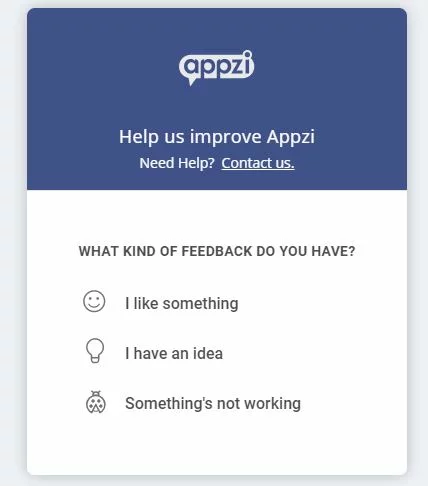
Somewhat obvious, but worth mentioning:
Put the feedback button in a visible place. A customized button will integrate just fine with your website. Usually, the feedback button is placed on the right side of the screen.
Closing Thoughts
Each of these methods has its own intrinsic, stand-alone value. When used optimally, each one, alone, could go the distance in increasing revenue, maintaining and even upgrading your company reputation, and with delivering to you valuable user data. However using them together will help you reach more users and accelerate the process of getting precious customer information.
If you’re still unsure on which way to go, simply start with one feedback method at a time and grow from that to more advanced surveys or tools. The sooner you start collecting feedback, the better.
